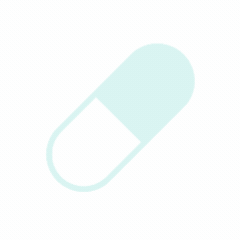Drug updated on 5/17/2024
| Dosage Form | Tablet (oral; bictegravir/emtricitabine/tenofovir alafenamide: 50 mg/ 200 mg/ 25 mg); Tablet (oral; bictegravir/emtricitabine/tenofovir alafenamide: 30 mg/ 120 mg/ 15 mg) |
| Drug Class | Antivirals |
| Ongoing and Completed Studies | ClinicalTrials.gov |
Indication
- Indicated as a complete regimen for the treatment of HIV-1 infection in adults and pediatric patients weighing at least 14 kg who have no antiretroviral treatment history or to replace the current antiretroviral regimen in those who are virologically suppressed (HIV-1 RNA less than 50 copies per mL) on a stable antiretroviral regimen with no history of treatment failure and no known substitutions associated with resistance to the individual components of Biktarvy.
Latest News

Summary
- Bictegravir, emtricitabine, and tenofovir alafenamide (Biktarvy) is indicated as a complete regimen for the treatment of HIV-1 infection in adults and pediatric patients weighing at least 14 kg who have no history of antiretroviral treatment or to replace the current antiretroviral regimen in those who are virologically suppressed.
- Six systematic reviews/meta-analyses provided comparative analysis of Biktarvy against other drugs focusing on safety, effectiveness, and population subgroups.
- The studies highlight that while Biktarvy has demonstrated comparable efficacy in real-world studies to its phase III trials, there is a need for further comprehensive studies focusing on demographic diversity such as women, pregnant individuals, ethnic minorities, and older adults.
- Compared with dolutegravir-based regimens, Biktarvy appears to have a lower incidence of discontinuation due to neuropsychiatric symptoms suggesting it might be a preferable option for individuals at risk or concerned about these symptoms.
- An indirect comparison suggests that dolutegravir + lamivudine might offer fewer serious adverse events compared to Biktarvy, indicating it could be considered for ART-naive people living with HIV, but the overall efficacy was similar among regimens, affirming Biktarvy's role as a potent option.
- Biktarvy showed no statistically significant difference in efficacy at week 48 when compared with other antiretroviral regimens according to meta-analysis, underscoring its competitive therapeutic profile among treatments, although some heterogeneity was noted across study populations.
Product Monograph / Prescribing Information
| Document Title | Year | Source |
|---|---|---|
| Biktarvy (bictegravir, embitcitabine, and tenofovir alafenamide) Prescribing Information. | 2024 | Gilead Sciences, Inc. Foster City, CA |

